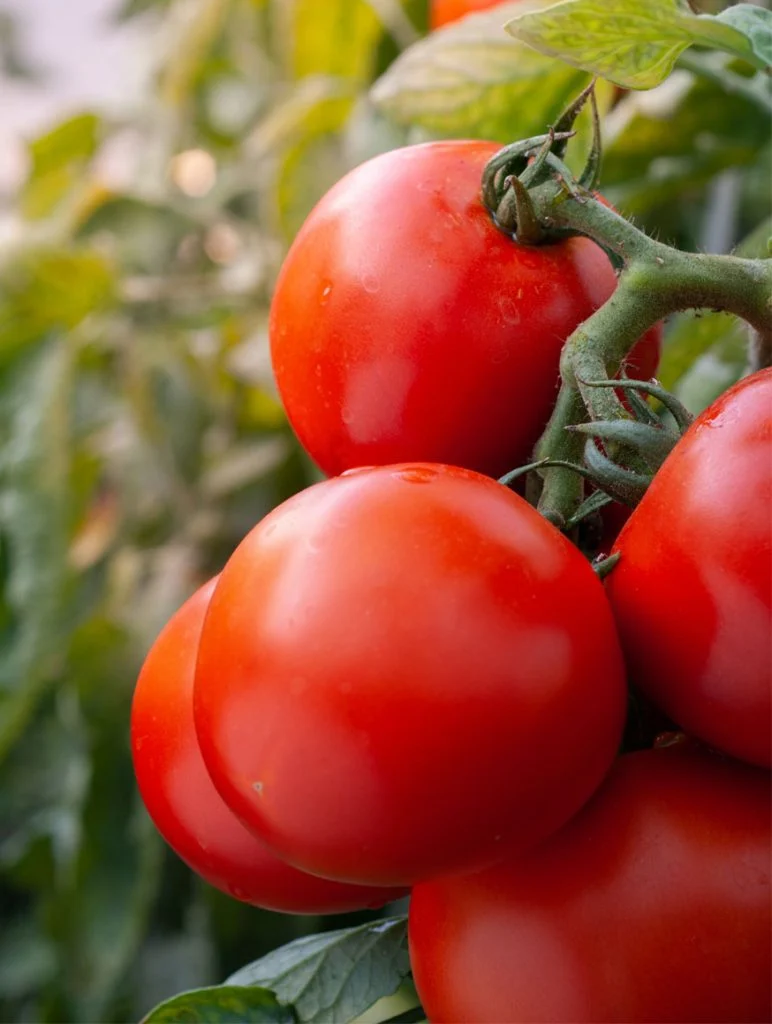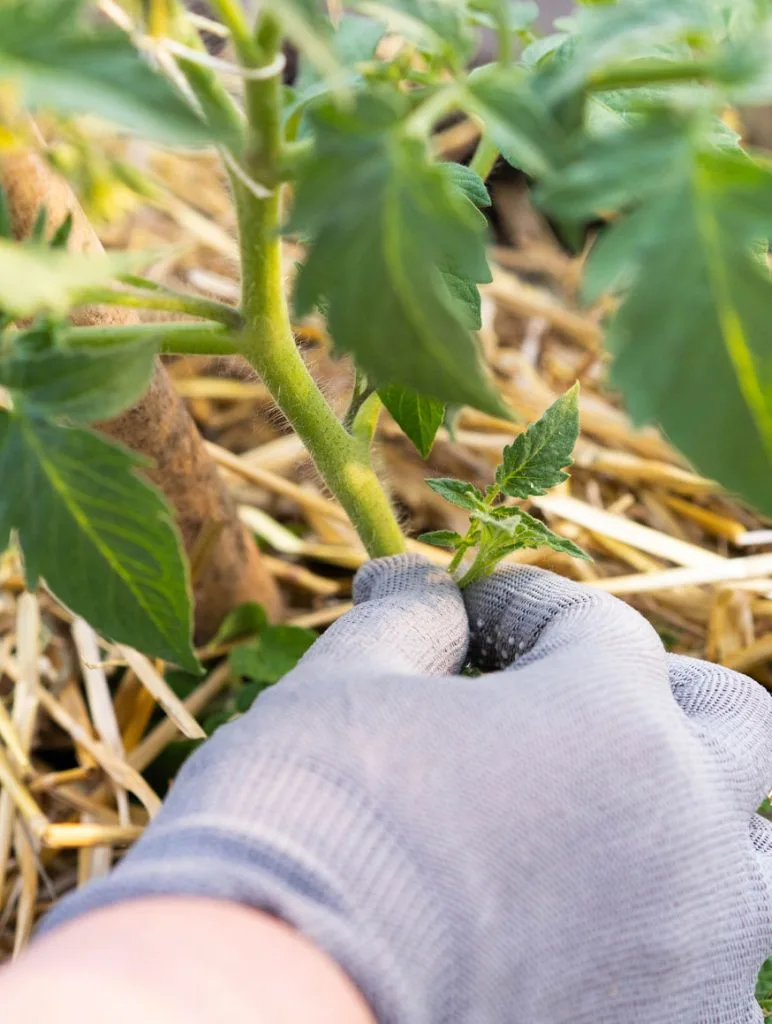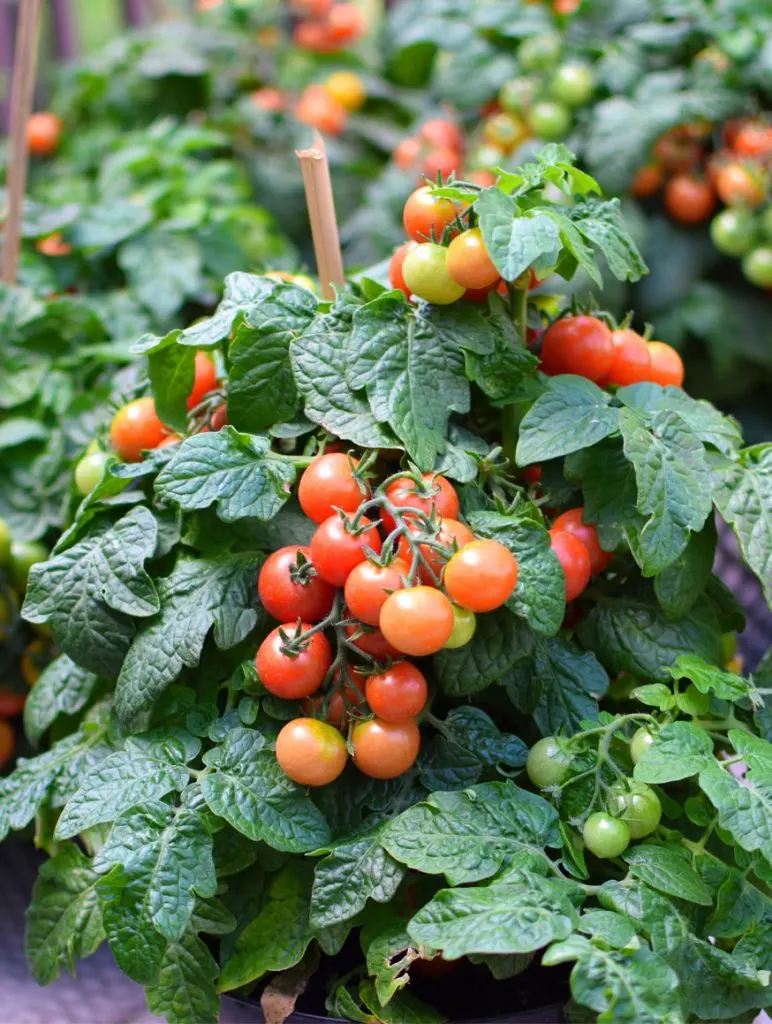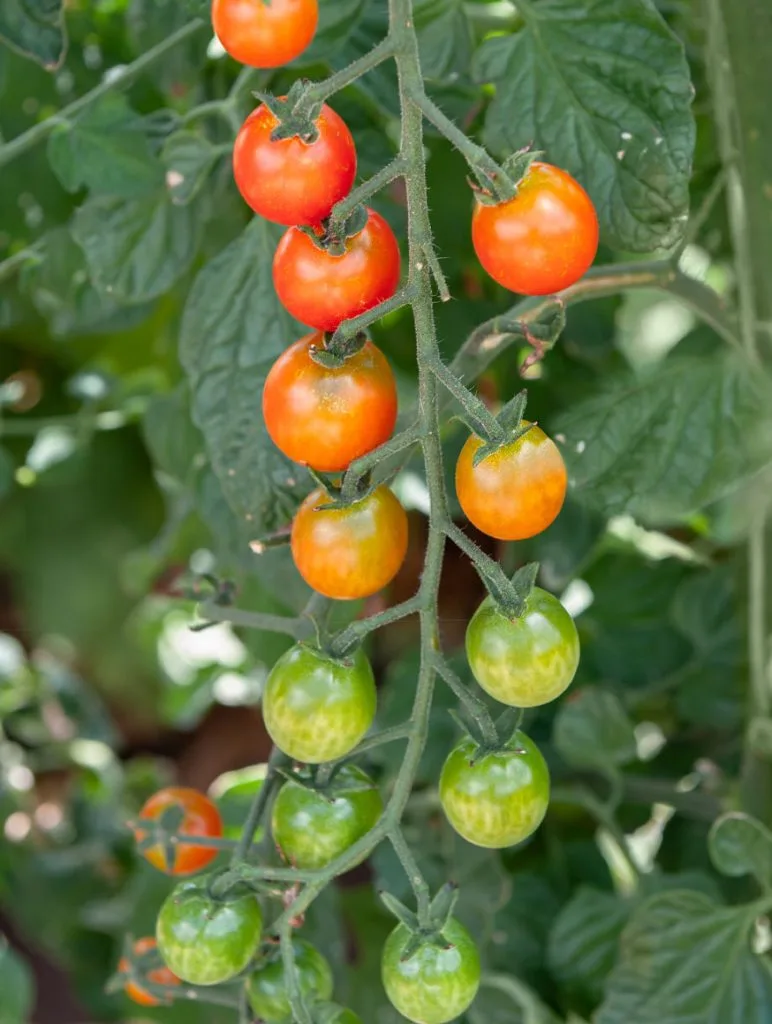Pruning your tomato plants might feel a bit ruthless at first — all that snipping and pinching! But done right, it helps your plants focus on producing a bigger, healthier crop rather than wasting energy on unnecessary foliage.

Whether you’ve started from seed, picked up a young plant from the garden centre, or just popped one in after a friend gifted you a seedling, pruning is one of the best things you can do for a bountiful harvest.
Here’s everything you need to know.
Why Prune Tomatoes?
- Boosts airflow — which helps prevent disease
- Encourages bigger fruit — energy goes into the tomatoes, not extra leaves
- Helps sunlight reach fruit — essential for ripening
- Keeps the plant manageable — especially in containers or small beds
When Should You Start Pruning?
Start pruning once your tomato plant is about 30cm (1ft) tall, with a few sets of true leaves and a sturdy main stem. This is usually a few weeks after transplanting.
You’ll continue to prune little and often, right through the growing season, especially during the peak summer months.
Pruning Basics: What You’re Removing
You’re mainly looking to remove suckers — the little shoots that grow out of the “V” between the main stem and a leaf branch.

Pinch these out when they’re small (5–10cm) using your fingers or snips.
If you let them grow, they’ll become full branches and produce their own flowers and fruit — but at the cost of a more tangled, energy-draining plant.
Fingers or Snips: What’s Better for Pruning Tomatoes?
Pinching out with your fingers is perfect for soft, young growth — like tiny suckers just starting to emerge. It’s quick, easy, and gentle enough not to damage the main plant. Just use your thumb and forefinger to snap them off cleanly.
✅ Best for:
- Removing small suckers early
- Quick daily tidying as you check your plants
Secateurs or snips are better for thicker, older stems — especially if you’ve missed a sucker and it’s grown into a woody side shoot. Cutting tools give you a cleaner cut, which reduces the risk of tearing the plant and introducing disease.
✅ Best for:
- Pruning larger suckers or lower branches
- Topping the plant at the end of the season
- Removing any diseased or damaged parts

Tip: Always clean your snips between plants to prevent spreading diseases like blight.
In short — fingers for the small stuff, snips for the tougher jobs!
Determinate vs. Indeterminate Tomatoes
Check your variety:
- Determinate tomatoes (like ‘Roma’, ‘Tiny Tim’): These are bush types and need very little pruning, or you’ll risk reducing your yield. Just remove dead or diseased leaves if needed.
- Indeterminate tomatoes (like ‘Sungold’, ‘Gardener’s Delight’, ‘Moneymaker’): Keep pruning suckers and consider removing some lower leaves as the plant grows.
Seedlings vs Shop-Bought Plants: Any Differences?
If you’ve grown from seed, pruning might start a little later, as your plant will take longer to get established.
If you’ve bought a young plant, check for any existing suckers or crowded growth — give it a little tidy-up and remove anything growing below the first flower cluster.
Whether seed-grown or store-bought, the same pruning rules apply once the plant is in the ground or pot.
What If I’ve Just Transplanted?
After transplanting, give your tomato a week or two to settle before you do any heavy pruning. You can remove any leaves that are touching the soil, as these can attract disease, but otherwise, let it get comfortable first.
Once it’s growing strong again, resume regular sucker pinching and tidying.
Bonus Tip: Top the Plant for Bigger, Earlier Fruit
Later in the season (around 6–8 weeks before your first frost date), you can “top” the plant — this means cutting off the growing tip at the top of the main stem.

This tells the plant to stop growing taller and put all its energy into ripening the fruit it’s already growing.
When to Harvest Your Tomatoes
This is the moment every tomato grower waits for — but also the stage where many feel unsure. Should you wait for deep colour on the vine? Can you pick them green and let them ripen indoors? Will they still taste good? Let’s break it down.
Harvesting When Fully Ripe on the Vine
Ideally, tomatoes are picked when they’ve fully ripened on the vine, as this gives the best flavour and sweetness.

Depending on the variety, that could mean deep red, orange, golden yellow, purple, or even striped.
Look for:
- Rich, even colouring (no green shoulders unless it’s a variety trait)
- A glossy, almost waxy skin
- Slight softness when gently squeezed
- Easy detachment with a twist or a snip — if you have to tug, it’s probably not ready
✅ These tomatoes are at peak flavour and perfect for eating fresh, roasting, or preserving
Picking Early – Harvesting When Partially Ripe or Green
There are times when picking early is the smart choice — especially if:
- Cold nights or frosts are on the horizon
- Birds, slugs, or bugs are starting to get curious
- Your plant is overloaded and struggling to ripen all its fruit
- You want to reduce the strain on the plant and help it finish off existing fruit
Tomatoes will continue to ripen once picked, as long as they’ve reached what’s called the “breaker stage” — when the skin starts showing the first hint of colour change.
At this stage:
- You’ll see a blush of pink, orange, or yellow near the base
- The skin feels less firm, and the green is slightly lighter
- They’ll ripen fully indoors within a few days to a week
To ripen indoors:
- Place them on a sunny windowsill
- Or pop them in a paper bag with a banana or apple — the ethylene gas helps trigger ripening
- Keep an eye out for mould — don’t crowd them too much

Avoid picking very hard, bright green tomatoes (unless you plan to cook them, like fried green tomatoes). These haven’t started the ripening process and may never fully develop flavour.
Do Tomatoes Ripen Faster on or off the Vine?
Tomatoes don’t need to be on the vine to ripen — but they do need to have started the ripening process (again, that breaker stage is key). Off-the-vine ripening is slower but safer if pests or cold weather are threatening your crop.
And sometimes, allowing fruit to ripen indoors actually helps your plant focus energy on finishing the rest of the crop, especially late in the season.
Final Tip: Prune with the End in Mind
As the season winds down, pruning plays one last important role — helping your plant focus its remaining energy on ripening the fruit it already has. Around 6–8 weeks before your expected first frost, pinch out the growing tip at the top of the plant (this is called “topping”).
This tells the tomato to stop producing new flowers and fruit, and instead, channel all its energy into ripening the existing crop.
You can also remove new suckers and small fruit clusters that are unlikely to mature in time. It might feel counterintuitive, but you’re giving your plant a clear message: “Let’s finish strong.”
This late-season pruning step often makes the difference between a glut of green tomatoes and a bowl full of ripe, juicy ones ready for the table.

